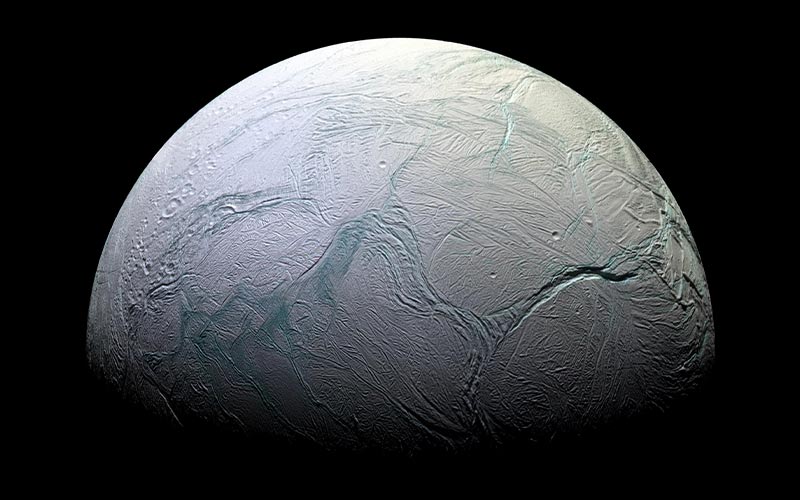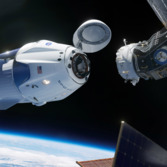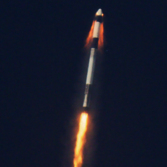The Planetary Society • May 20, 2020
Your Guide to Crew Dragon's First Astronaut Flight
At a Glance
- SpaceX is launching NASA astronauts Bob Behnken and Doug Hurley on the first crewed commercial flight to the International Space Station (ISS) on 27 May at 1:32 p.m. PDT / 4:32 p.m. EDT / 20:32 UTC. Watch it live here: planetary.org/live
- The mission is the culmination of NASA’s commercial crew program, a public-private partnership approach to spaceflight resulting from policy decisions made by NASA and the White House a decade ago.
- You can get involved by watching this historical launch live and sharing your excitement with others. You can also learn why the ISS and commercial crew matter, and take other actions to get involved with The Planetary Society.
Nine years after the final Space Shuttle mission blasted off from Kennedy Space Center, humans are once again ready to launch to orbit from the United States. On 27 May, NASA astronauts Bob Benkhen and Doug Hurley will climb inside a SpaceX Crew Dragon vehicle atop a Falcon 9 rocket and embark on the world’s first orbital commercial spaceflight with astronauts aboard.
The mission is the culmination of NASA’s commercial crew program, a partnership between NASA and private industry to ferry astronauts to and from the International Space Station. Unlike previous human spaceflight programs, NASA is a customer buying rides to orbit from commercial providers like SpaceX. It does not directly own or operate the spacecraft its astronauts will fly in.
Space firsts like this are rare. For NASA, it is a moment akin to John Young and Bob Crippen climbing aboard the first Space Shuttle flight in 1981—except it will be a private company, not NASA, that launches the rocket. The last time a new spacecraft sent a human into orbit was 2003, when Yang Liwei performed China’s first human spaceflight aboard Shenzhou 5. For private companies, there is no comparison. Though Virgin Galactic’s SpaceShipTwo space plane and its predecessor, SpaceShipOne, have carried humans beyond the boundary of space, no company has ever launched astronauts into orbit.
How to watch
Benkhen and Hurley are currently scheduled to launch on 27 May and dock at the International Space Station (ISS) less than a day later.
Launch: 27 May at 1:32 p.m. PDT / 4:32 p.m. EDT / 20:32 UTC
Docking: 28 May at approximately 8:29 PDT / 11:29 EDT / 15:29 UTC
You can watch the launch live at planetary.org/live.
Based on how smoothly the mission proceeds, NASA is expected to keep the astronauts aboard the station between 1 and 4 months. They will return to Earth in Crew Dragon, splashing down in the Atlantic Ocean just off the Florida coast from where their mission started.
Why does this mission matter?
The mission, known as Demo-2, is a test flight to verify SpaceX’s Crew Dragon is safe to transport astronauts to the ISS. Crew Dragon previously flew to the ISS in 2019 without astronauts aboard.
Since the retirement of the Space Shuttle program in 2011, NASA has relied on Russia to launch its astronauts on Soyuz vehicles. Not only is this undesirable from a U.S. political perspective, it also represents a single point of failure for access to the space station. Not just NASA astronauts will fly aboard Crew Dragon—Japan’s Soichi Noguchi will be 1 of 4 crewmembers on the very next flight scheduled for September 2020.
Visit our commercial crew page to learn more about why and how NASA worked with private industry to create a novel approach to spaceflight in the wake of the Space Shuttle’s retirement:
Commercial crew represents a new relationship between NASA and private industry. It will ferry astronauts to and from the International Space Station, but also potentially create an entirely new market for humans in space.
While the Soyuz can only carry 3 astronauts, commercial crew vehicles will be able to carry more. This will allow NASA and its international partners to max out the station’s crew complement at 7, enabling more scientific research. Astronauts conduct research aboard the ISS that helps us learn about the effects of long-term spaceflight on the human body. They also test technologies that will be needed for human missions beyond low-Earth orbit.
Visit our ISS page to learn more, including why the ISS shows that multiple countries and private companies can work together for the peaceful exploration of space:
NASA and its international partners conduct research aboard the ISS that helps us learn about the effects of spaceflight on the human body. They also test technologies needed for missions beyond low-Earth orbit.
Dig Deeper
We’ve dedicated 2 episodes of our flagship podcast, Planetary Radio, to this historical event.
Former NASA associate administrator Lori Garver joined our 6 May episode to look back at the origins of the commercial crew program. As NASA’s associate administrator under President Barack Obama, Garver was one of the strongest advocates of commercial space development.
Former NASA astronaut and current SpaceX senior advisor Garrett Reisman joined our 20 May episode to give us an exclusive preview of the Crew Dragon mission. Reisman was a NASA astronaut who made 2 Space Shuttle flights to the ISS. During the first he served aboard the station for 3 months.
The Planetary Society believes that NASA should create a pathway for the U.S. private sector to take on activities previously led by the government in low-Earth orbit. This will enable NASA to focus its resources on sending humans further out into space and helps foster a vibrant, exciting new industry for the nation. See more of our Principles for Human Spaceflight.
Get Involved
You and your community can take part in this historic moment in several ways. This launch is a great opportunity to advocate for space exploration by inviting your friends and family to take part in the excitement. The easiest way to get involved is to simply watch the launch live at planetary.org/live and join in on the conversation about it on social media.
You can also explain the role of NASA in this endeavor. Commercial crew, and the experiment with public-private partnerships, was the result of smart policy decisions made by NASA and White House leadership in the early beginning in the mid-2000s and continuing in the early 2010s. NASA didn’t sit back and wait for private industry to solve its problem of access to the ISS—it actively pursued this novel approach.
Now is also a great time to go outside and look for the ISS in the night sky. Use NASA’s Spot the Station website to find out when it will fly over your location, and encourage others to do the same. Depending on where you live and what time you look, you might even be able to see Crew Dragon approaching the station as a second, fainter point of light!
Finally, if you’ve ever dreamed of being an astronaut, you’ll want to try SpaceX’s Crew Dragon docking simulator. This free game lets you work with the same control interface that NASA astronauts use to manually pilot Crew Dragon. Ordinarily, dockings with the International Space Station are automated, but the astronauts can take manual control if needed.
Three ways you can be a space advocate
- Sign up for The Downlink, our weekly toolkit that contains news, announcements, and actions you can take to support space science and exploration.
- Take our Space Advocacy 101 course to learn the inner works of NASA, how Congress develops space legislation, and how to engage with your elected officials.
- Share this page with a friend, spread the word on social media, and tell others about the importance of knowing the cosmos and our place within it.

Let's Change the World
Become a member of The Planetary Society and together we will create the future of space exploration.

The Planetary Fund
Help advance robotic and human space exploration, defend our planet, and search for life.
from Planetary Society Blog https://ift.tt/2WOQyUE
via IFTTT



沒有留言:
張貼留言